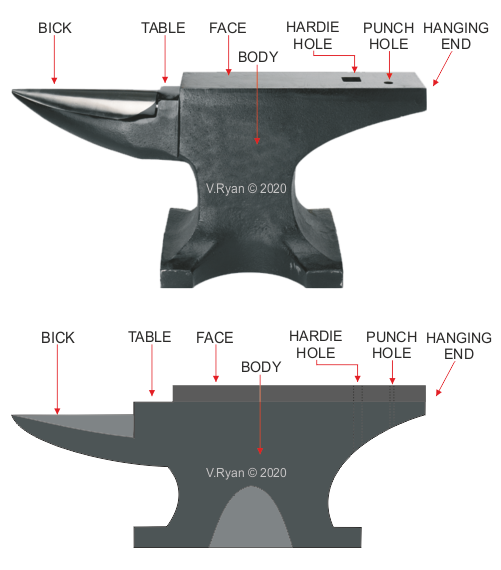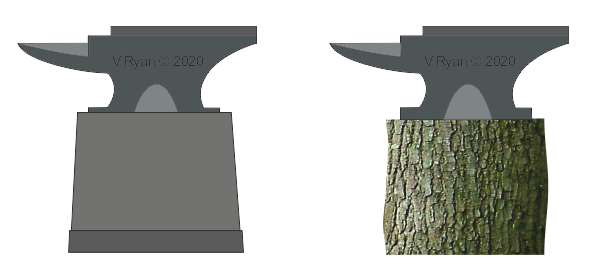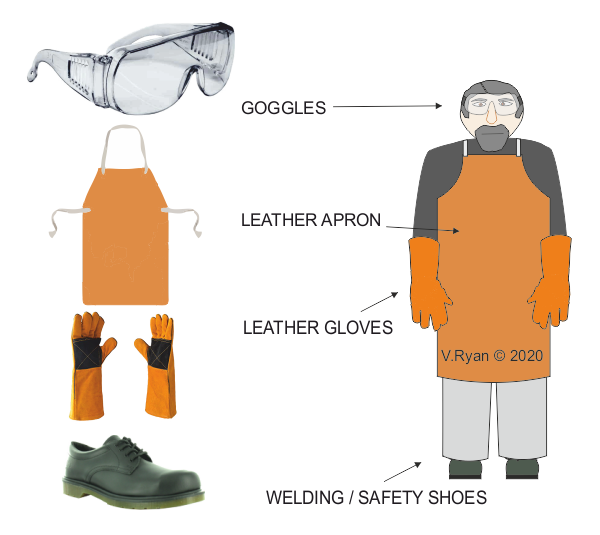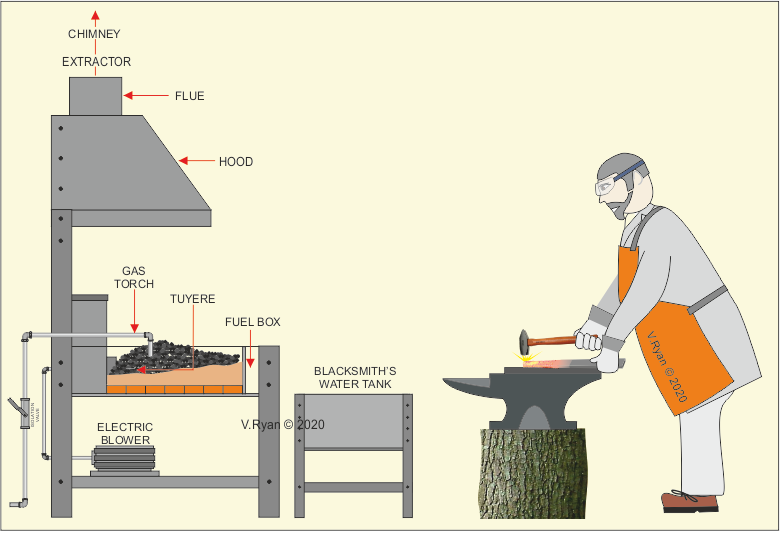| CLICK HERE FOR INDEX PAGE |
| |
| THE ANVIL, FORGING AND SAFETY |
V.Ryan © 2020 |
| |
An anvil should be set at a comfortable height for the user. One that is set directly on the floor, is difficult to use, tiring for the Blacksmith and putting strain on the back. An anvil should be set on a cast steel anvil stand, or preferably a trunk of elm. The elm absorbs the force of each hammer blow, transmitted through the anvil to the stand. A cast steel stand does not absorb hammer blows, and tends to react / bounce. |
| |
 |
| |
|
|
| |
| THE ANVIL STAND |
| |
| An anvil should be set at a comfortable height for the user. One that is set directly on the floor, is difficult to use, tiring for the Blacksmith and putting strain on the back. An anvil should be set on a cast steel anvil stand, or preferably a trunk of elm. The elm absorbs the force of each hammer blow, transmitted through the anvil to the stand. A cast steel stand does not absorb hammer blows, and tends to react / bounce. |
| |
 |
| |
|
|
| |
| FORGING AND SAFETY |
| |
| Forging is a skilled craft and requires the Blacksmith to work metal at very high temperatures. For this reason, it is important that safety is the first priority. This begins with wearing the correct protective ‘gear’. The image below shows a Blacksmith wearing goggles, to protect eyes from sparks and hot debris. A leather apron is vital, as this natural material will protect most of the body from hot splinters of metal, which would easily burn through normal clothing. Blacksmiths gloves are also vital, to protect hands from serious burns. Keeping in mind, that the metal is often held and manipulated by the Blacksmith’s hands. Safety shoes, capable of protecting the feet from the potential of heavy metal / tools being dropped. |
| |
 |
| |
| TYPICAL LAYOUT OF A BLACKSMITH'S FORGE |
| |
 |
| |
|
|
| |
| CLICK HERE FOR EQUIPMENT AND PROCESSES INDEX PAGE |
| |
|
| |
|



